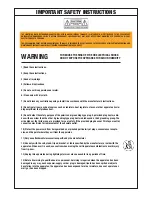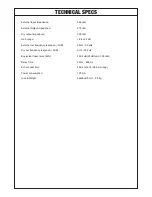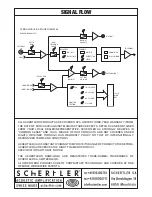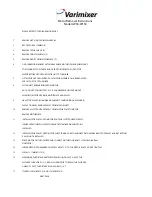
ART48 - SPRING
The architecture of ARTHUR’s spring unit reverb offers the best of both worlds: digital delay and analog
decay. Digital delay provides a simple and efficient solution for delay lines that retard or echo the signal
before being sent to the spring. However, when it comes to the more complex matter of reverberation, the
good old spring still provides a more “natural” and musical solution. The spring unit includes six springs to
give a rich reverb effect that also has a time-adjustable decay.
In addition to its function as an ARTHUR mixer module, the spring unit can also be used as a stand-alone
unit, providing reverb for a signal from another mixer, or a guitar pedal, for example.
Positioning the spring unit
The spring unit has been configured to sum the signal from the AUX 1 bus. All input units mounted to the
left of the spring unit will therefore flow to it. On its right side, the spring unit interrupts the AUX 1 bus, so
the AUX 1 signal from any subsequent input units on this side will be summed by a second spring reverb,
or by the original AUX 1 master on the L/R Master unit.
This enables you to create several independent AUX 1 lines.
As an example, working from the left side of the ARTHUR mixer, you could start by mounting a mic in unit,
then add a spring unit followed by all the other input and output units. In this particular case, only the first
mic unit (e.g. for a lead vocal) will benefit from the spring unit’s reverb. All other input units (mounted to the
right of the spring unit) will be summed through the L/R Master (fig. 1) and will receive their reverb from
another (external) effects unit. Should you prefer to use the spring unit reverb on all the input units, you
must mount it right next to the L/R Master, on the left hand side.
Important: If you want to have your spring unit as the final unit on the right side of the mixer - as many users
prefer - you must first deactivate the summing amp on the L/R Master (fig. 2). This is done by depressing
the respective blue button (fig. 3) on the L/R Master circuit board, which is positioned just under the fader
next to the bus connector.
Now let’s take a look at some of this unit’s innovative features.
Fig. 3
Fig. 1
Fig. 2
ANY
OTHER INPUT
AUX1 to Spring
ANY
OTHER INPUT
AUX1 to Spring
SPRING
left side of the MASTER
ANY
OTHER INPUT
AUX1 to MASTER
MASTER
ANY
OTHER INPUT
AUX1 to Spring
MASTER
ANY
OTHER INPUT
AUX1 to Spring
SPRING
right side of the MASTER
released
depressed


























